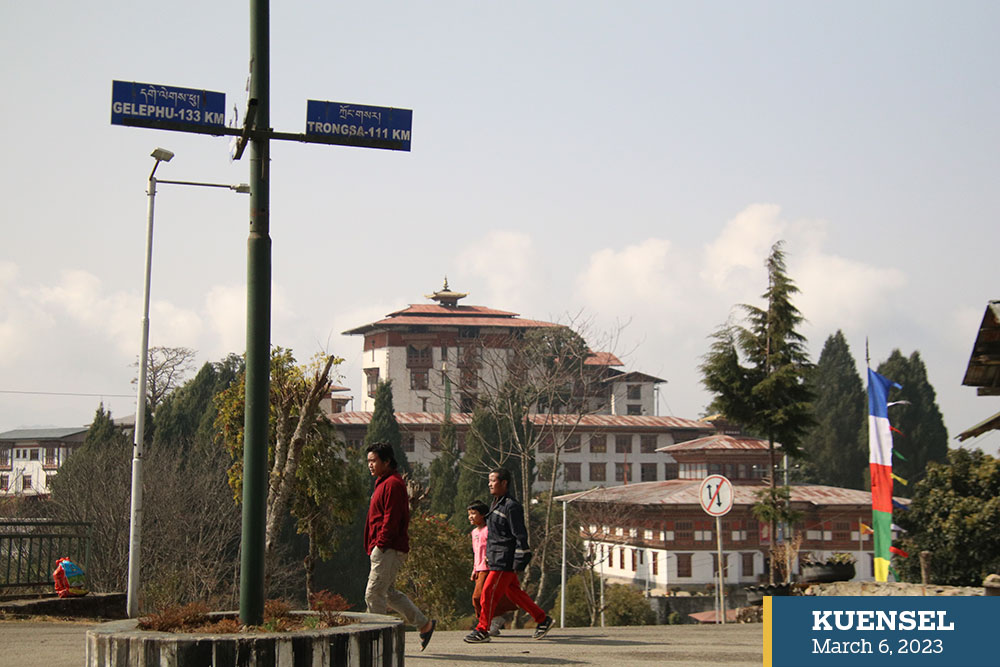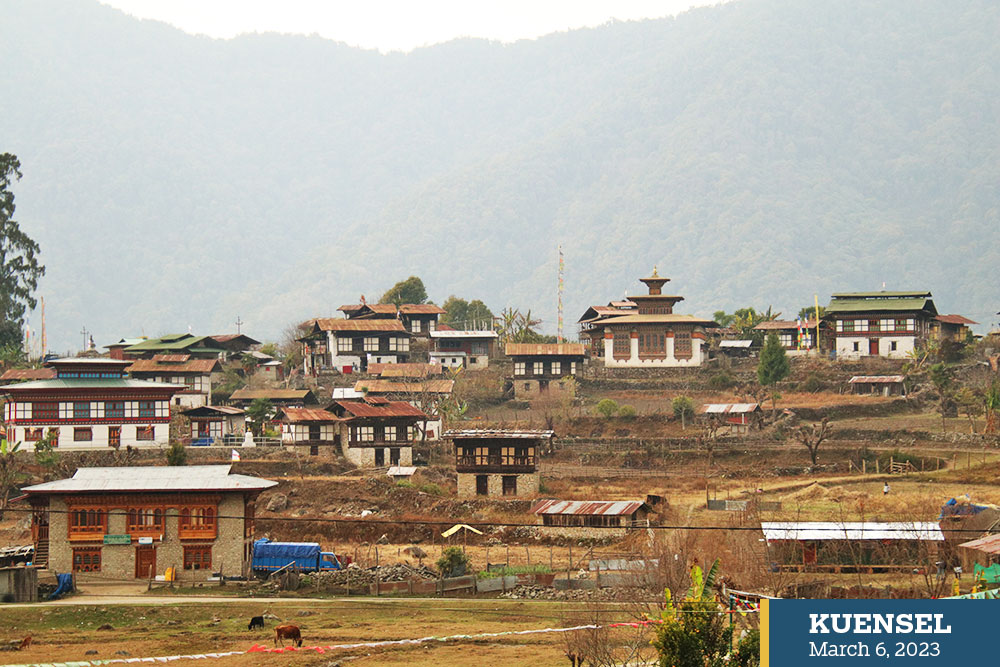… Zhemgang is home to over 1,000 different species
Lhakpa Quendren
Zhemgang dzongkhag administration is preparing development plans to promote community-based ecotourism for the upcoming 13th Five-Year Plan.
While the dzongkhag has rich culture and biodiversity, issues with accessibility and other infrastructure prevented it from realising its full potential mainly community-based ecotourism business for both international and local tourists.
Following a stakeholders meeting, the administration decided to propose plans to develop the dzongkhag as an ecotourism destination.
Zhemgang’s officiating dzongdag Ugyen Lhendup, said, “We are developing a community-based ecotourism management plan based on the action plan developed for the 12th Plan and will be proposed for implementation in the 13th Plan.”
“The dzongkhag has asked the gewogs to come up with their own plans to promote ecotourism in their respective areas. If any unique plans related to ecotourism emerge from the gewogs, we will incorporate them into the dzongkhag plan,” he said.
Ugyen Lhendup said that the plan includes reviving and improving the ancient trails between Dakphel-Buli, Khandropang-Ura-Shingkhar, and Zurphel-Gongphu. “Bird-watching towers would be built at certain points.”

Zhemgang Dzong
“We will also promote homestays in Singkhar and Bardo gewogs depending on the public interest. The existing eco-lodges will be improved with additional infrastructures,” he said.
In an attempt to showcase their unique culture and local products, he said that the dzongkhag would also resume the three-day Bhutan Bird Festival.
With 94.17 percent of its area covered by forests, Zhemgang is home to nature reserves for the Royal Manas National Park, the Jigme Singye Wangchuck, and the Phrumsengla National Parks where rare and endangered species and wildlife including Golden Mahseer can be found.
It is a habitat for 22 endangered animal species, including the Golden Langur, 234 bird species, and about 800 species of herpetofauna, butterflies, moths, orchids, and wildflowers while many remain undiscovered.
Zhemgang Dzongkhag Tshogdu’s Thrizin and Trong Gup, Wangay, said that Zhemgang could be the spectacular bird-watching destination in the country. “It is considered desirable because we can witness a lot of bird species, especially within Tingtibi.”
Given that Zhemgang has the highest poverty rate in the country, he said, developing viable community-based ecotourism projects would provide additional source of revenue to communities and strengthen their local economy.
At the far end of the dzongkhag, Panbang is filled with the natural ecosystem, wildlife, and natural beauty including a popular twin waterfall. Panbang river-rafting and bamboo works, among others, are making an ideal destination with a unique location.
Challenges
Despite potential tourist attractions, underdeveloped tourism infrastructure such as poor accommodation facilities and difficult road conditions has stymied the visit of tourists to Zhemgang dzongkhag.
Nangkor Mangmi Sonam said that the lack of infrastructure, specifically quality hotels, and roads are some reason for low tourist arrivals in the dzongkhag. “Zhemgang does not have the standard hotels to accommodate the foreign tourists,” he said.
He said that poor road is also a major barrier to keeping pace with the growing demand to visit the sacred sites. “The poor road poses challenges to the tourists and pilgrims.”
The growing number of local visitors to Dudmang tshachu, Buli Tsho, the Dungkhar Nye, and the Chenrezig Drupchhu in Nangkor gewog encouraged the people in Buli village to venture into homestays.
However, a homestay owner, Tshering Youden, 59, said she is not able to optimise her income from remodeling the homestay. “I receive a few local pilgrims but I did not receive tourists for many years now.”
“My homestay can accommodate 20 to 30 guests at a time. I have invested about Nu 200,000 to redevelop the homestay. I charge Nu 900 per guest a night for accommodation and three meals,” she said.
The other challenges include a lack of shelter and a guesthouse during the night at the site of Dudmang tshachu.
According to the annual Department of Tourism report, Zhemgang had 346 visitors in 2019.
Recommendations
With some interventions, Zhemgang can be a potential tourist destination, where tourists visit for its exhibited cultural value, historical significance, flora and fauna, and natural beauty.
Locals say that the government could facilitate and expedite efforts to develop infrastructure to add value to the identity of the community.
Trong Gup Wangay said that a lot needs to be done to develop the tourism infrastructure for Zhemgang. “To increase the attractiveness of the tourist destination, there is a need to focus on plans to promote ecotourism.”
He said that the Department of Tourism should initiate a dedicated ecotourism package. “For instance, the department could send the birders to Zhemgang.”
“We have also plans to establish an information centre with a mini-conference hall at Tingtibi for bird-watching tourism,” he said, adding that inadequate budget allocation impedes the development works.
For tourism to thrive, Nangkor Mangmi Sonam, said that the public should work to improve hygiene and sanitation, and other services. “Redevelopment should be done based on traditional values with modern amenities.”
Zhemgang has sacred sites scattered all over the picturesque mountains including Buli Lhakhang and Tharpa Choeling Lhakhang. It also hosts a series of religious festivals.
This story is supported by the GEF-UNDP Ecotourism Project under the Department of Tourism


